I have been considering building the Jonokuchi amp, but got to thinking that I would want something that would work well as a preamp in my current setup. I considered building an integrated amp with headphone out, but with my speakers (Sonus Faber Cremona) I would need a reasonable powerful P-P amp. I think, for now, it makes sense to build something that could work as a preamp in my system & later build robust tube amp. I planned to build the Jonokuchi with point to point wiring, but don't know how well this unit would work as a preamp driving a SS amp. I would appreciate any advice. BTW My current headphones are 50 ohm, so I probably need something with output transformers. I would like to keep the component price under $300.
Thanks,
kev
Thanks,
kev
What kind of amplifier and source do you have ? In other words, what kind of output voltage and gain do you need from your preamp ?
Last edited:
You could do a dedicated headphone amp....
Well I know that 😉, it's just that I was entertaining the idea of building a HP amp that could also serve as a preamp, so I could have some fun with my big system. Money for this is very tight right now. I was very close to ordering the components for the Jonokuchi when I started this thread.
To 00940:
My power amp is a Bryston or Classe & input sensitivity is 1.4v for rated output. (400w).
Input Z is 50K.
Sources are CD player & AudioQuest Dragonfly DAC, not sure of the output levels. My speakers are around 92dB efficiency @ 4 ohms.
I am using a Theta preamp currently. I am in a small room, so I don't play it very loud.
If this would be a compromise for either function, I will not do it & go for dedicated units.
Thanks,
kev
You could do a dedicated headphone amp....
Well I know that 😉, it's just that I was entertaining the idea of building a HP amp that could also serve as a preamp, so I could have some fun with my big system. Money for this is very tight right now. I was very close to ordering the components for the Jonokuchi when I started this thread.
To 00940:
My power amp is a Bryston or Classe & input sensitivity is 1.4v for rated output. (400w).
Input Z is 50K.
Sources are CD player & AudioQuest Dragonfly DAC, not sure of the output levels. My speakers are around 92dB efficiency @ 4 ohms.
I am using a Theta preamp currently. I am in a small room, so I don't play it very loud.
If this would be a compromise for either function, I will not do it & go for dedicated units.
Thanks,
kev
Headphone amps and preamps do different things so need different engineering compromises. Combining the two means even more compromises.
The lowest cost headamp that I've built is a 24V 12AU7 with Mosfet's on the output as class A followers, using the heaters as a pull down resister, so good for 150ma. This concept was in an article from the early 1960's. Pete's starving student headamp also uses this concept. The 12AU7 can be swapped out with 12BH7's for 300ma if needed. I use 12AU7 tubes with 32 ohm Sony cans. I adjusted the bias 6 months ago and haven't touched it since, sounds great!!
I have another design in process , 6JT8 tubes in PP with little 4 watt universal output transformers. The advantage of this design is having output taps for 4 and 8 ohm for high efficiency speakers as well as a 32ohm tap for the cans. I hope to be able to finish this concept this Fall.
2 yrs ago I did a head amp hybrid based on 160volts B+ with Compactron tubes on the front end. This was a little more complicated but sounded great with DC on the heaters. It could be built with an additional tone section PCB piggybacked on top. It was designed for 6U10 or 6AC10 tubes. (triple triodes)
There are several excellent performing low cost headphone amp designs available... This is just a very small sampling.
I have another design in process , 6JT8 tubes in PP with little 4 watt universal output transformers. The advantage of this design is having output taps for 4 and 8 ohm for high efficiency speakers as well as a 32ohm tap for the cans. I hope to be able to finish this concept this Fall.
2 yrs ago I did a head amp hybrid based on 160volts B+ with Compactron tubes on the front end. This was a little more complicated but sounded great with DC on the heaters. It could be built with an additional tone section PCB piggybacked on top. It was designed for 6U10 or 6AC10 tubes. (triple triodes)
There are several excellent performing low cost headphone amp designs available... This is just a very small sampling.
Attachments
-
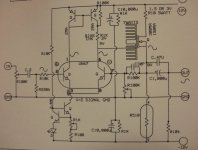 glass-sand_all_sand.jpg600.7 KB · Views: 271
glass-sand_all_sand.jpg600.7 KB · Views: 271 -
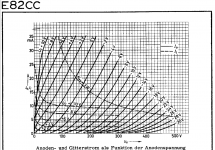 graph.png327.2 KB · Views: 266
graph.png327.2 KB · Views: 266 -
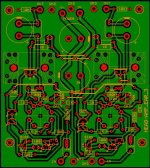 glass-sand_PCB.jpg177.2 KB · Views: 251
glass-sand_PCB.jpg177.2 KB · Views: 251 -
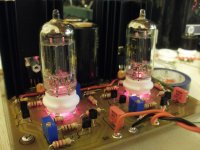 day21.jpg136.7 KB · Views: 242
day21.jpg136.7 KB · Views: 242 -
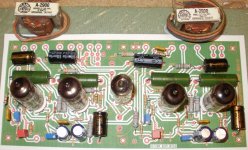 Spacing check.jpg831 KB · Views: 242
Spacing check.jpg831 KB · Views: 242 -
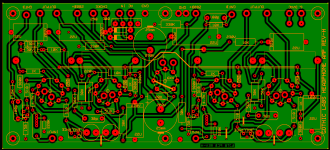 PP HEADPHONE AMP.png77.6 KB · Views: 88
PP HEADPHONE AMP.png77.6 KB · Views: 88 -
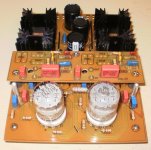 P2120279.jpg522.9 KB · Views: 85
P2120279.jpg522.9 KB · Views: 85 -
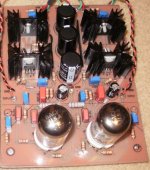 plan-b2a.jpg80.9 KB · Views: 91
plan-b2a.jpg80.9 KB · Views: 91 -
 hd1b.jpg168.7 KB · Views: 99
hd1b.jpg168.7 KB · Views: 99
Headphone amps and preamps do different things so need different engineering compromises. Combining the two means even more compromises.
I'd agree. With 50 ohm headphones, I would think you will need to use an output transformer or silicon output stage to get it to sound decent, or perhaps get very clever with the tube output stage. Given your headphones, my experience says its better to build dedicated units for each purpose.
On the other hand, if you had 300 ohm headphones like the Sennheiser HD 600 or 650 or equivalent, you could probably get away with one unit that served both purposes using a more traditional tube output stage approach, such as a 6H30 or equivalent cathode follower.
I built one like I described above. In preamp mode, the output coupling caps are 0.22 uF (could go larger). In headphone mode, I switch in a parallel 100 uF audio quality electrolytic cap that straddles the 0.22 uF cap. It sounds awfully good in both modes, for each purpose.
Lastly, I put in a mute circuit since switching in a 100 uF cap causes a loud click I didn't want to hear through my headphones or speakers.
The only issue I've got with my unit is that because it's a cathode follower, it inverts phase. I can easily adjust for that when using it as a traditional preamp, but when using it with headphones, phase is inverted. I could fix that by swapping wires at the phone plug..but actually I couldn't tell a difference, so I just let it be.
Cathode followers do not invert phase.kward said:The only issue I've got with my unit is that because it's a cathode follower, it inverts phase.
Cathode followers do not invert phase.
This amp has inverted phase on the output with respect to the input because it only has one phase inversion stage. The voltage gain stage is a common cathode which inverts, the second stage is a cathode follower which does not invert. Therefore the output is inverted with respect to the input.
Check out my improved tube headphones amp:
http://www.diyaudio.com/forums/tubes-valves/191632-improved-tube-headphones-amp.html
Cheers
Ian
http://www.diyaudio.com/forums/tubes-valves/191632-improved-tube-headphones-amp.html
Cheers
Ian
- Status
- Not open for further replies.
- Home
- Amplifiers
- Tubes / Valves
- Headphone amp/preamp project.